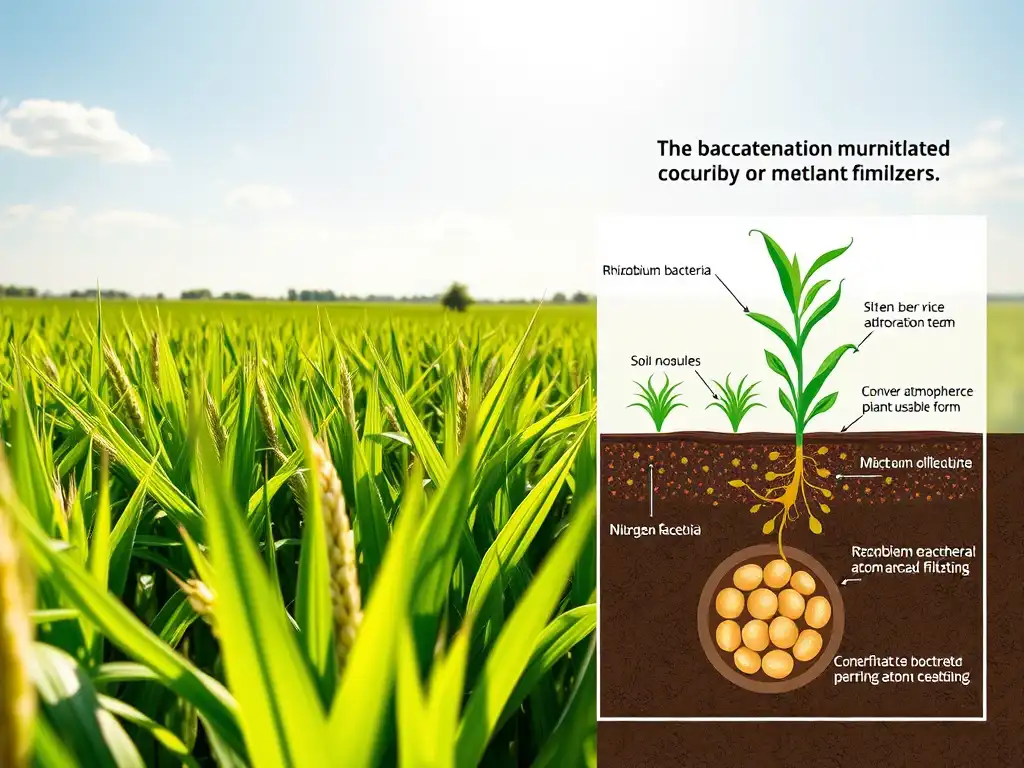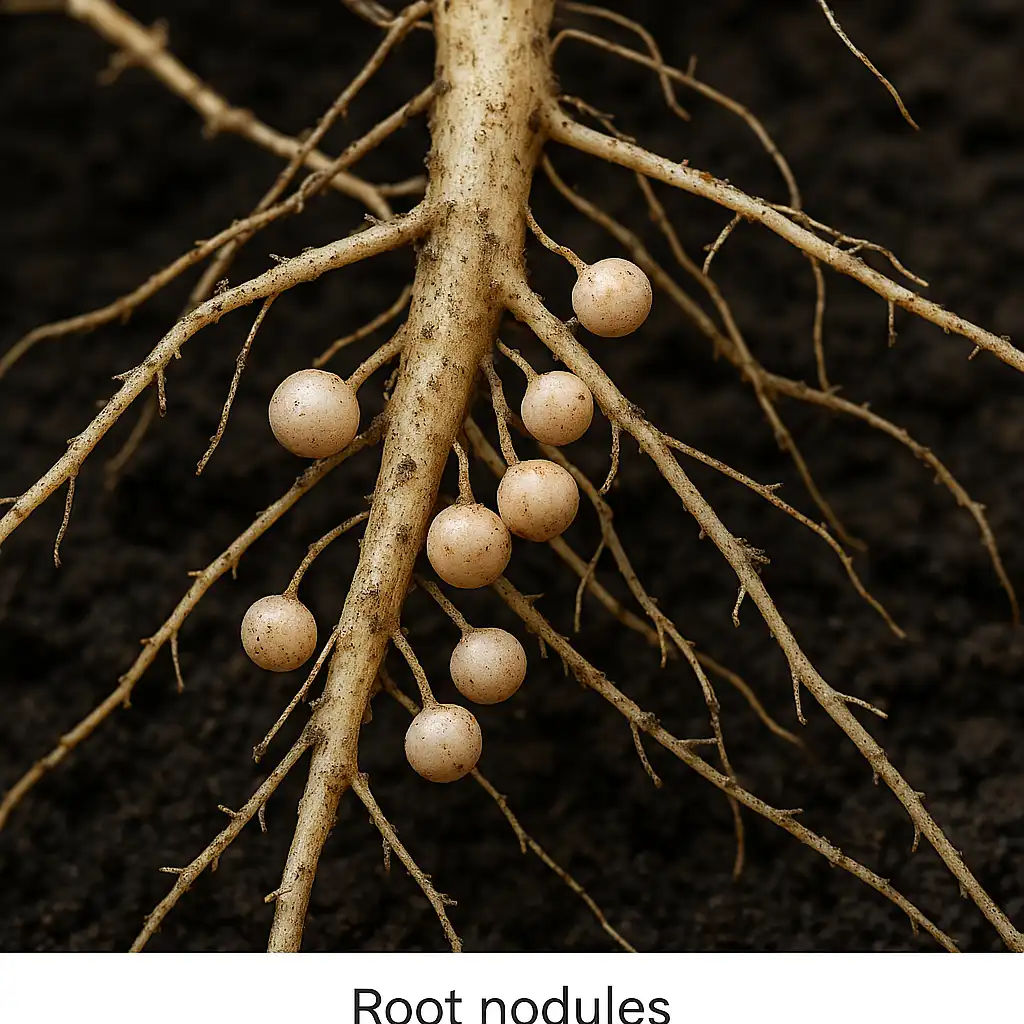All blog posts
TopReferralCode.online is your trusted hub for the latest, verified referral codes, promo codes and coupons across ecommerce, food‑delivery, travel and more. Save up to 50% on every purchase—discover exclusive deals you won’t find anywhere else.
Determining Fertilizer Quantities for Crops: A Comprehensive Guide
April 2, 2025 | by Aria Thorne
Organic Fertilizers: Enhancing Soil Health and Crop Productivity
April 2, 2025 | by Aria Thorne
Precautions and Benefits of Using Biofertilizers and Biopesticides in Sustainable Agriculture
April 2, 2025 | by Aria Thorne
The Power of Beneficial Microorganisms in Agriculture: A Comprehensive Guide to Sustainable Farming
April 2, 2025 | by Aria Thorne
The Power of Beneficial Microorganisms in Agriculture: A 1200-Word Guide to Sustainable Farming
April 2, 2025 | by Aria Thorne
The Role of Azotobacter and Azospirillum as Biofertilizers in Agriculture
April 2, 2025 | by Aria Thorne
The Effectiveness of Beneficial Microbial Fertilizers in Agriculture
April 2, 2025 | by Aria Thorne
Agriculture is the backbone of many economies, and ensuring optimal crop yield is a priority for farmers worldwide. One critical aspect of successful farming is the proper application of fertilizers. Fertilizers provide essential nutrients to crops, enhancing growth and productivity. However, determining the right type and quantity of fertilizer can be a complex task, influenced by soil fertility, crop type, and regional conditions. In this article, we’ll explore how to calculate fertilizer quantities for crops, with a focus on high-yielding Boro rice cultivation, sulfur application, and the role of micronutrients. This guide is tailored to help farmers make informed decisions and maximize their harvests.
Fertilizer Requirements for High-Yielding Boro Rice

Let’s consider a practical example: cultivating high-yielding Boro rice on one acre of moderately fertile soil. The recommended fertilizer dosage for nitrogen (N), phosphorus (P), and potassium (K) is 52:26:26 kg per acre. These nutrients are vital for plant growth, with nitrogen promoting leaf development, phosphorus aiding root and flower formation, and potassium enhancing overall plant vigor. But how do farmers translate these nutrient requirements into actual fertilizer quantities? Let’s break it down.
Calculating Fertilizer Quantities
- Nitrogen (N): 52 kg
- Urea, a common nitrogen fertilizer, contains 46% nitrogen.
- To supply 52 kg of nitrogen:
( 52 \div 0.46 = 114.5 \, \text{kg of urea} ).
- Phosphorus (P): 26 kg
- Single Super Phosphate (SSP) contains 16% phosphorus.
- To supply 26 kg of phosphorus:
( 26 \div 0.16 = 162.5 \, \text{kg of SSP} ).
- Potassium (K): 26 kg
- Muriate of Potash (MOP) contains 60% potassium.
- To supply 26 kg of potassium:
( 26 \div 0.60 = 43.25 \, \text{kg of MOP} ).
Alternatively, if a farmer opts for Diammonium Phosphate (DAP), which contains 18% nitrogen and 46% phosphorus:
- To supply 26 kg of phosphorus:
( 26 \div 0.46 = 56.5 \, \text{kg of DAP} ). - This 56.5 kg of DAP also provides:
( 56.5 \times 0.18 = 10.17 \, \text{kg of nitrogen} ). - Remaining nitrogen requirement:
( 52 – 10.17 = 41.83 \, \text{kg} ). - Urea needed for 41.83 kg nitrogen:
( 41.83 \div 0.46 = 92 \, \text{kg} ).
In this case, the farmer would use 56.5 kg of DAP, 92 kg of urea, and 43.25 kg of MOP. The N:P:K ratio of 2:1:1 is typically followed, meaning for every 2 kg of nitrogen, 1 kg of phosphorus and 1 kg of potassium are applied. Timing is also crucial—nitrogen is often split into multiple applications (e.g., at planting, tillering, and panicle initiation) for optimal uptake.
The Growing Importance of Sulfur in Crop Cultivation
Beyond NPK, sulfur (S) has emerged as an essential nutrient in modern agriculture. Sulfur deficiency is increasingly observed in regions like West Bengal, India, particularly in districts such as Birbhum, Bardhaman, West Medinipur, South 24 Parganas, Murshidabad, and Bankura. Sulfur is critical for protein synthesis and chlorophyll formation, and its deficiency can mimic nitrogen deficiency symptoms, such as yellowing leaves. However, sulfur deficiency typically affects younger leaves first, with older leaves drying out gradually.
Identifying Sulfur Deficiency
Soil sulfur levels below 10-12 ppm (parts per million or mg/kg) indicate a deficiency. Crops like pulses, oilseeds, potatoes, vegetables, and even rice show improved yields with sulfur application. For instance, in peanut cultivation, applying 200 kg of gypsum (13% sulfur) per acre during the final land preparation significantly boosts yield.
Sulfur-Rich Fertilizers
Farmers can address sulfur deficiency using:
- Ammonium Sulfate: 24% sulfur.
- Single Super Phosphate: 12% sulfur.
- Potassium Sulfate: 18% sulfur.
- Magnesium Sulfate: 13% sulfur.
- Elemental Sulfur or Pyrite: 22% sulfur (suitable for high-pH soils).
- Phospho-Gypsum: 16% sulfur.
The recommended sulfur application rate varies from 8-20 kg per acre, depending on soil and crop needs. For high-pH soils, elemental sulfur or gypsum is particularly effective as it gradually lowers soil pH while supplying sulfur.
Micronutrients: The Unsung Heroes of Crop Health

Micronutrients, though required in small quantities, are indispensable for crop growth. Think of them as the salt in a dish—small amounts make a big difference, but excess can be harmful. Deficiencies in zinc, boron, molybdenum, copper, iron, and manganese are increasingly reported in West Bengal, affecting crop quality and yield.
Critical Micronutrient Levels in Soil
| Micronutrient | Extraction Method | Critical Level (ppm) |
|---|---|---|
| Zinc | DTPA solution | 0.60-1.00 (rice, wheat, oilseeds) |
| Boron | Hot calcium chloride solution | 0.50 (rice, wheat, oilseeds) |
| Molybdenum | Ammonium oxalate solution | 0.05-0.36 (varies by crop) |
| Copper | DTPA solution | 0.20 (rice, maize, citrus) |
| Iron | DTPA solution | 2.5-4.5 (rice, wheat, maize) |
| Manganese | DTPA solution | 1.0 (rice, wheat, orchards) |
Symptoms of Micronutrient Deficiency
- Zinc: Yellowing between veins of older leaves, brown rust spots, stunted growth (e.g., Khaira disease in rice).
- Boron: Drying of terminal buds, brittle stems, cracked fruits (e.g., hollow stem in cauliflower).
- Molybdenum: Pale, shriveled leaves, reduced nodulation in legumes (e.g., yellow spotting in citrus).
- Copper: Whitish leaf tips, curling leaves, stunted plants.
- Iron: Chlorosis between veins, yellowing leaves (common in high-pH rice fields).
- Manganese: Yellowing leaves with green veins, followed by blackening.
Recommended Micronutrient Application
Micronutrients are best applied as foliar sprays to avoid soil toxicity. Here’s a guide:
- Zinc: 8-10 kg zinc sulfate (21% Zn) in soil or 0.5 g/L zinc EDTA as a spray.
- Boron: 4 kg borax (10.5% B) in soil or 1.5-2 g/L borax as a spray.
- Molybdenum: 400 g ammonium molybdate (52% Mo) in soil or 0.5 g/L as a spray.
- Copper: 2 kg copper sulfate (24% Cu) in soil or 2 g/L with lime as a spray.
- Iron: 4-10 kg ferrous sulfate (19% Fe) in soil or 10 g/L with lime as a spray.
- Manganese: 8-10 kg manganese sulfate (30% Mn) in soil or 5 g/L with lime as a spray.
Spraying is typically done 25-30 days after planting (160 L water) and 45-50 days after planting (320 L water).
Mixed Micronutrient Recommendations
In areas with multiple deficiencies, the West Bengal Agriculture Department recommends mixed micronutrient formulations:
- Grade-1 (Soil): Iron, zinc, manganese, boron, copper—6 kg mixed with 30 kg organic manure during first top-dressing.
- Grade-2 (Foliar): Zinc, boron, copper—2-5 g/L water, sprayed twice.
These formulations are tailored to crops like vegetables, oilseeds, pulses, wheat, and rice across kharif and rabi seasons.
Conclusion
Determining the right fertilizer quantities is both an art and a science. By understanding soil nutrient needs, crop requirements, and deficiency symptoms, farmers can optimize fertilizer use for better yields. Whether it’s calculating NPK for Boro rice, addressing sulfur shortages, or applying micronutrients, precision is key. For more insights into sustainable farming practices, check out our previous article on “Harnessing Biofertilizers: A Sustainable Approach to Soil Fertility and Crop Productivity”.
With this knowledge, farmers can not only boost productivity but also contribute to sustainable agriculture, ensuring food security for generations to come.








